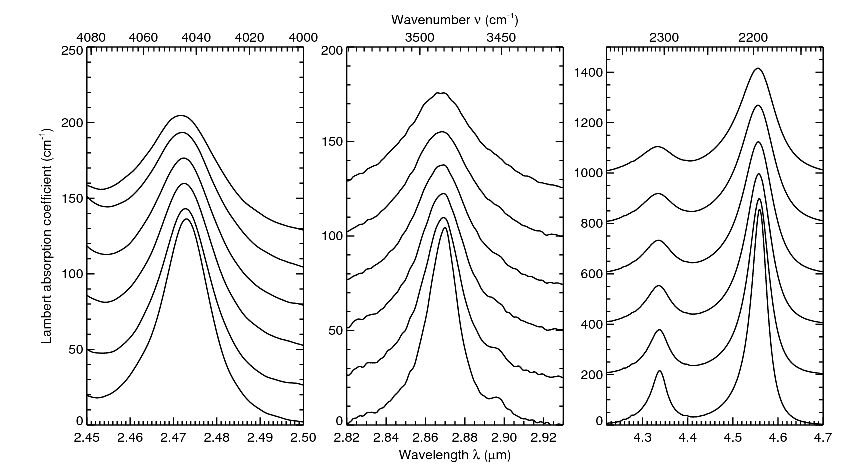
Remote Sensing D/H Ratios in Methane Ice: Temperature-Dependent Absorption Coefficients of CH3D in Methane Ice and in Nitrogen Ice
Published in 2011: Icarus 212, 941-949.
W.M. Grundy1, S.J. Morrison2, M.J. Bovyn3, S.C. Tegler3, and D.M. Cornelison4
(1) Lowell Observatory, Flagstaff AZ.
(2) Cornell University, Dept. of Astronomy, Ithaca NY; 2010 summer REU student at Northern Arizona University.
(3) Northern Arizona University, Dept. of Physics and Astronomy, Flagstaff AZ.
(4) Missouri State University, Dept. of Physics, Astronomy, and Materials Science, Springfield MO; formerly at Northern Arizona University Dept. of Physics and Astronomy.
Abstract
The existence of strong absorption bands of singly deuterated methane (CH3D) at wavelengths where normal methane (CH4) absorbs comparatively weakly could enable remote measurement of D/H ratios in methane ice on outer solar system bodies. We performed laboratory transmission spectroscopy experiments, recording spectra at wavelengths from 1 to 6 Ám to study CH3D bands at 2.47, 2.87, and 4.56 Ám, wavelengths where ordinary methane absorption is weak. We report temperature-dependent absorption coefficients of these bands when the CH3D is diluted in CH4 ice and also when it is dissolved in N2 ice, and describe how these absorption coefficients can be combined with data from the literature to simulate arbitrary D/H ratio absorption coefficients for CH4 ice and for CH4 in N2 ice. We anticipate these results motivating new telescopic observations to measure D/H ratios in CH4 ice on Triton, Pluto, Eris, and Makemake.

Fig. 4. Effective absorption coefficients of three absorption bands of CH3D diluted in methane ice, as a function of temperature in 10 K increments starting at 40 K on the bottom and ending with 90 K on top. Each successive spectrum is shifted upward by 25 cm-1 in the left two panels and by 200 cm-1 in the right panel. Absorption coefficients for an arbitrary ratio of CH3D/CH4 can be simulated with an appropriately weighted combination of these absorption coefficients and those of normal methane.